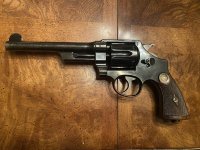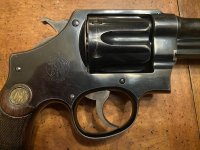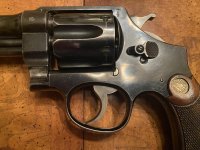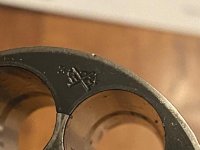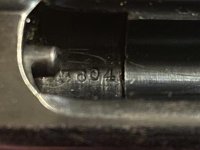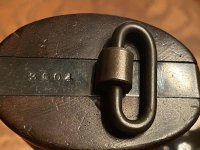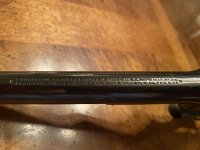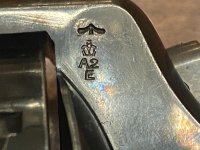This revolver remains in its original .455 Webley configuration. The photograph of the cylinder serial number also demonstrates the nice surface one wants to see, proving original .455 Webley configuration. The crossed penants are a proof mark; the crown tells us it’s the property of the crown. I’m not sure the significance of the marking above the crown? A2 was the inspector at the Royal Small Arms Factory at Enfield Lock (“E”). What is the significance of the “X” through the cylinder serial number? Also noticeably absent is “Not English Make”. Also absent are the two facing arrows, signifying removal from service, and also absent are proofing of each individual chamber. No markings on the barrel except the barrel address. Serial number 3604.
Attachments
Last edited:


